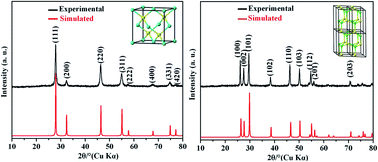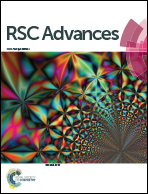Selective synthesis of cubic and hexagonal phase of CuInS2 nanocrystals by microwave irradiation†
Abstract
Metastable cubic zincblende and hexagonal wurtzite CuInS2 nanocrystals were successfully synthesized by a facile microwave radiation method. The morphology, structure and phase composition of the as-prepared products were examined, and the results demonstrated that high-purity and uniform CuInS2 nanocrystals were obtained. Further investigation revealed a structural evolution process from cubic zincblende to hexagonal wurtzite with increasing volume ratio of ethylenediamine and ethanol from 1 : 30 to 1 : 1 at 160 °C. In addition, the optical absorption properties of samples were also studied. It was found that the as-synthesized cubic and hexagonal CuInS2 nanocrystals had band gaps of 1.503 and 1.470 eV, respectively. Thanks to the superior optical absorption properties for visible light, CuInS2 nanocrystals may have potential applications in various nanostructured optoelectronic devices. The possible formation mechanism of the product, namely “phase transformation”, was systematically studied.


 Please wait while we load your content...
Please wait while we load your content...